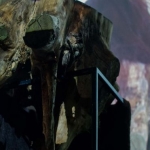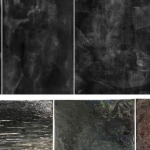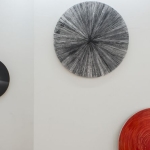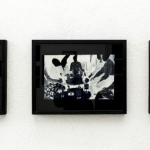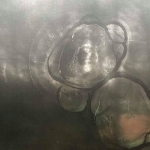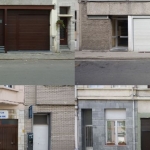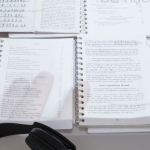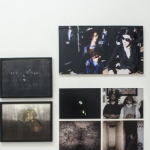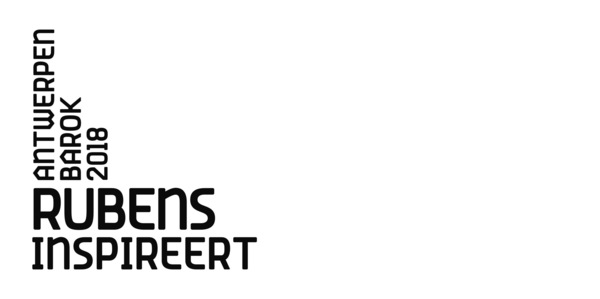
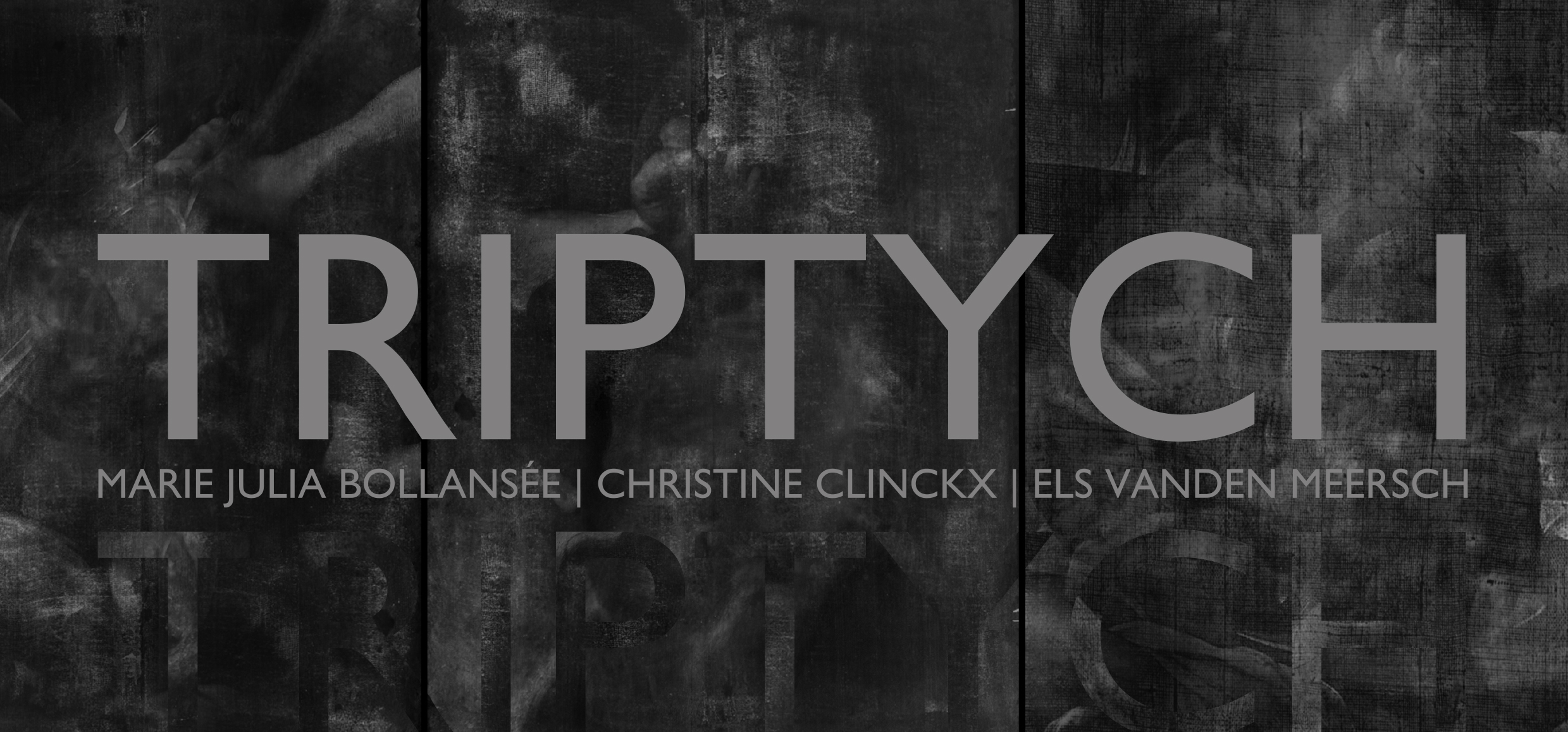
TRIPTYCH
MARIE JULIA BOLLANSÉE, CHRISTINE CLINCKX, ELS VANDEN MEERSCH
09/03 - 06/05/2018
Eva Steynen.Deviation(s), Antwerp
In the context of Antwerp Baroque 2018, Eva Steynen invited Marie Julia Bollansée, Christine Clinckx and Els Vanden Meersch to make a personal contemporary reflection on the paintings of the Baroque period in Europe. Started with visits to Rubens' works in the Antwerp cathedral and the Carolus Borromeus they each in their own specifique way created new work or selected existing work.
Marie Julia Bollansée shows two photographs on lambdaprint and a video-performance MAMMUTH, from the series of the abscent audience. They represent three wanderings she made through time, states of being and into the prehistory of mythologies and referring to the classical format of a triptych, which was frequently used in Baroque altar pieces.
Marie Julia Bollansée’s (°1961 B, lives and works in West-Malle) work is about people, their lives and deaths. The physical is a constant factor in Ms. Bollansée’s videos and performances, as she was trained as a classic sculptor. She plays the role of observer, translating age-old human themes into images that we can all relate to. Her performances bring the everyday but often hidden forces into the light. Her photo installations create fields of tension between primary materiality, poetry, and aesthetic images. In her performances she's fascinated by the chemical reactions caused by unexpected interactions and collaborations. “I try to detect the chemistry between people and to formulate this in my work so that viewers become more aware of their humanity. I want to expand the frontiers of the perceptible. I’m convinced that people urgently need to see and understand the essential, but too often invisible, motives and sources in today’s society.”
Christine Clinckx, for this exhibition and in the context of Antwerp Baroque 2018, investigated and translated the phenomenon Baroque in a radical way. She was particularly inspired by Caravaggio, who's work was at the core of early Baroque painting with its extremely graphic imagery of Salome with the head of st John Baptist, David with the head of Goliath and Judith beheading Holofernes. Inspired by her photographic background, Clinckx decided to X-ray these paintings digitally, so that all the colours would disappear in order to reduce these paintings to their naked graphic essence. Then she mixed all the colours of each of the three paintings in a separate glas and poured the glass in one gesture onto a blank canvas, creating abstract, seemingly harmless and decorative synthesises of Caravaggio's gruesome palette.
In her installations, video works, drawings and sculptures Christine Clinckx (°1969 B, lives and works in Antwerp) combines influences and information taken from contemporary society, personal history and ‘ancient’ knowledge. Her works could be described as contemporary ‘symbols’, deeply rooted in Clinckx’ critical and sometimes activist engagement in the world as it is: a place of crisis and conflict, in which one has to fight to survive (physically and/or mentally). Processes of memory and amnesia are visualised and materialised by ‘reconstructing’ fragments of personal and/or familial histories.Those who engage themselves intensely in society, as Clinckx does, perceive war, environmental disasters, aggression, violence and racism as expressions of human failure, symptoms of a perverted world.
Els Vanden Meersch shows a triptych out of serie 'speaking in thongues'.
Abundanceis an installation composed of books, texts and recordings. It represents a search through a spiritual and psychological maze of possibilities to construct social identity, shown by an abundance of framed perspectives.
Units of infinity takes the city behind the facades as a starting point. All religious interiors of the same city, Antwerp, are captured in pictures and sound recordings during the execution of their specific ceremonies. The project investigates how smaller commercial spaces transform into prayer rooms of all kinds, and how different social groups are shaping public space into a fragile puzzle that constantly rearranges it selves. The sound and image collage that visualizes the thin boundaries between metaphysical intimacy and public space, interior and exterior, identity and politics, and displays it in a jumble of images and sound clips that overlap, neutralize and enhance their juxtaposition. The conclusive nature of the convictions becomes shaky in their many juxtaposed versions as they are subjected to an overall market mechanism. The result is a walk through the city as a marketplace, strolling as Babylonian experience.
Els Vanden Meersch (works and lives in Antwerp) her practice as an artist, architecture has a meaning far beyond the discipline that combines aesthetics with functionality. Buildings mirror existential social behavior; they contain both bottom up and top down social activities and structures. She's interested in these types of buildings that, because of their functional nature, reveal our social interhuman convictions. These places are hard to remove after transformation of a specific ideological era therefore they fossilize what often wants to be forgotten or monumentalize what is suppose to be our pride. Architecture is too heavy and massive to be random; there is more reason behind every corner than making a simple junction between two walls. Institutional buildings can be micro-societies, revealed or hidden, operating within a macro-society. She enters many buildings to research and document specific architectural structures that are at the same time social memory containers and social blueprints.

